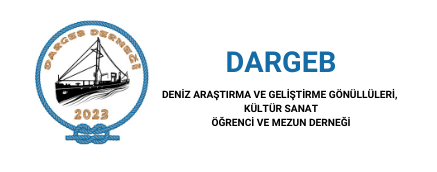From the gentle babbling of mountain streams to the rhythmic crashing of ocean waves, water sounds have captivated human senses across centuries. Their universal appeal transcends cultures and eras, serving as a profound source of relaxation, inspiration, and even spiritual connection. This article explores the multifaceted relationship between humans and water sounds — their historical roots, cultural significance, modern representations, and their role in contemporary media and gaming, exemplified by popular titles like fisherman symbol substitutes all.
- Introduction: The Universal Appeal of Water Sounds and Their Role in Human Culture
- The Historical Significance of Water in Human Life
- Evolution of Water Sounds in Human Culture and Mythology
- Water Sounds in Traditional and Modern Music and Media
- Technological Innovations and Water Sound Recreation
- Water Sounds in Gaming: From Nature to Virtual Reality
- Fishin’ Frenzy as a Modern Illustration of Water’s Soothing Power
- The Environmental and Ecological Implications of Water Sounds
- Future Perspectives: The Evolving Relationship Between Humans and Water Sounds
- Conclusion: Embracing the Serenity of Water Sounds Across Time and Media
Introduction: The Universal Appeal of Water Sounds and Their Role in Human Culture
Water sounds have long served as a natural form of auditory comfort, present in rituals, folklore, and daily life. Across societies, the soothing qualities of flowing water, rainfall, or ocean waves have been harnessed to promote relaxation and mental clarity. Scientific studies reveal that exposure to water sounds can lower cortisol levels, reduce anxiety, and improve concentration. The purpose of this article is to delve into the historical and cultural significance of water sounds, illustrating their enduring influence through examples such as modern digital recreations and their integration into gaming environments, where they continue to evoke calmness and realism.
Historical Significance
Mythology & Culture
Music & Media
Technology & Soundscape
Gaming & VR
Modern Illustration
Ecological Impact
Future Perspectives
Conclusion
The Historical Significance of Water in Human Life
Historically, water has been essential for human survival, shaping early settlements and fostering community development. Archaeological discoveries reveal that ancient civilizations flourished around rivers, lakes, and coastal areas, where water not only provided sustenance but also served as transportation routes. For example, the discovery of Neolithic fishing villages along the banks of the Nile or the Indus Valley underscores water’s central role in daily life and spiritual practices.
Natural water sounds in these environments likely influenced early humans’ emotional states, offering calming auditory stimuli that reinforced community bonds and spiritual rituals. The gentle flow of a river or the lapping of waves could have become part of early storytelling and ceremonial practices, embedding water sounds into cultural consciousness.
Evolution of Water Sounds in Human Culture and Mythology
Throughout history, water has symbolized life, renewal, and mystery across diverse mythologies. In Greek mythology, the river Styx represented both boundary and spiritual purification, while in Hindu traditions, the Ganges River embodies divine cleansing and rebirth. Water sounds in these contexts—such as flowing rivers or soft rain—became auditory representations of these symbolic meanings.
In rituals and storytelling, water sounds have been employed to evoke emotions or signify transitions—like the cleansing of sins or the awakening of consciousness. Artworks, from ancient murals to modern installations, often feature water to symbolize vitality or enigma.
With technological advances, human cultures transitioned from natural water sounds to engineered reproductions—such as water fountains, recordings, and sound machines—integrating these soothing elements into daily life and spiritual practices.
Water Sounds in Traditional and Modern Music and Media
Water sounds have found their way into classical compositions and folk music, offering calming or invigorating effects. Composers like Debussy, with his piece La Mer, evoke the ocean’s moods, while traditional rainstick instruments in indigenous cultures symbolize cleansing and renewal.
In contemporary media, water sounds are ubiquitous—used in films to heighten tension or tranquility, in theater to evoke natural settings, and in meditation apps to promote relaxation. The psychological impact of these sounds can reduce stress, improve focus, and foster a sense of serenity, as supported by research from environmental psychology.
Technological Innovations and Water Sound Recreation
| Technology | Application |
|---|---|
| High-fidelity sound recording | Authentic water sound playback in recordings and apps |
| Digital soundscapes | Immersive relaxation environments in virtual reality and meditation tools |
| Biofeedback devices | Using water sounds to promote mindfulness and reduce stress |
Modern technology has allowed us to recreate and manipulate water sounds with remarkable fidelity. These digital soundscapes are integrated into therapy and relaxation applications, enhancing mental health and well-being. As an example, virtual environments with realistic water sounds offer immersive experiences that can help individuals manage anxiety or improve focus, illustrating the deep connection between auditory stimuli and emotional states.
Water Sounds in Gaming: From Nature to Virtual Reality
In the realm of gaming, water sounds play a crucial role in creating immersive environments that captivate players. Whether simulating a tranquil fishing pond or an intense ocean storm, these sounds enhance realism and emotional engagement. Sound design in games involves layering water effects—such as ripples, splashes, and flowing streams—to evoke specific moods like calmness, suspense, or excitement.
For instance, casual and simulation games often incorporate water sounds to foster relaxation. This approach leverages the innate human affinity for water’s soothing qualities, as seen in titles like Fishin’ Frenzy, where the soundscape is integral to the experience. Such games demonstrate how auditory elements can transcend entertainment, offering psychological benefits akin to those found in natural environments, reinforcing water’s role as a universal calming agent.
Fishin’ Frenzy as a Modern Illustration of Water’s Soothing Power
Fishin’ Frenzy exemplifies how contemporary digital experiences harness the timeless appeal of water sounds. Its gameplay revolves around fishing—an activity intrinsically linked to water and nature—where ambient sounds like flowing streams, gentle waves, and splashes enhance relaxation and immersion. These auditory cues help players feel connected to the aquatic environment, fostering a sense of calm even amidst high-stakes gameplay.
Beyond entertainment, this game illustrates how virtual water sounds can serve educational purposes. By simulating water ecosystems, players gain a subconscious awareness of aquatic ecology and historical water-related practices. The soothing soundscape acts as a bridge, linking digital experiences with real-world water environments and their ecological significance.
The Environmental and Ecological Implications of Water Sounds
Natural water sounds are vital indicators of ecological health. They reflect the presence of biodiversity, water quality, and habitat stability. For example, a diverse chorus of frogs, insects, and flowing streams signifies a balanced ecosystem, whereas diminished or monotonous sounds can indicate pollution or habitat degradation.
Human activities—such as dam construction, pollution, or urbanization—alter water flows and diminish natural soundscapes. Recognizing these changes can inform conservation efforts. Protecting water bodies not only preserves ecological integrity but also maintains the cultural and emotional values associated with water sounds, fostering a deeper appreciation for ecological sustainability.
Future Perspectives: The Evolving Relationship Between Humans and Water Sounds
Emerging technologies like virtual and augmented reality promise to further deepen our interaction with water sounds, offering highly realistic and customizable soundscapes. These innovations could revolutionize therapeutic practices, allowing individuals to experience calming aquatic environments regardless of their physical location.
Furthermore, integrating water sounds into educational tools could enhance environmental awareness and ecological literacy. As digital soundscapes become more sophisticated, their potential to foster mental health, environmental stewardship, and immersive entertainment continues to expand, reinforcing water’s timeless role in human life.
Conclusion: Embracing the Serenity of Water Sounds Across Time and Media
“Water sounds are more than mere auditory stimuli; they are a bridge connecting our past, present, and future, embodying the enduring human bond with nature.” — Anonymous
Throughout history, water sounds have served as a universal language of calmness, renewal, and mystery. From ancient spiritual rituals to cutting-edge digital environments, their influence underscores an intrinsic human connection to aquatic environments. As technology advances, our ability to emulate and incorporate these sounds into everyday life offers profound opportunities for relaxation, education, and ecological awareness.
We encourage readers to actively explore water sounds—whether through nature, media, or interactive experiences—to foster a deeper appreciation of water’s calming power and ecological importance. Embracing this sensory connection enriches our understanding of both history and future possibilities, affirming water as a timeless source of serenity and inspiration.

